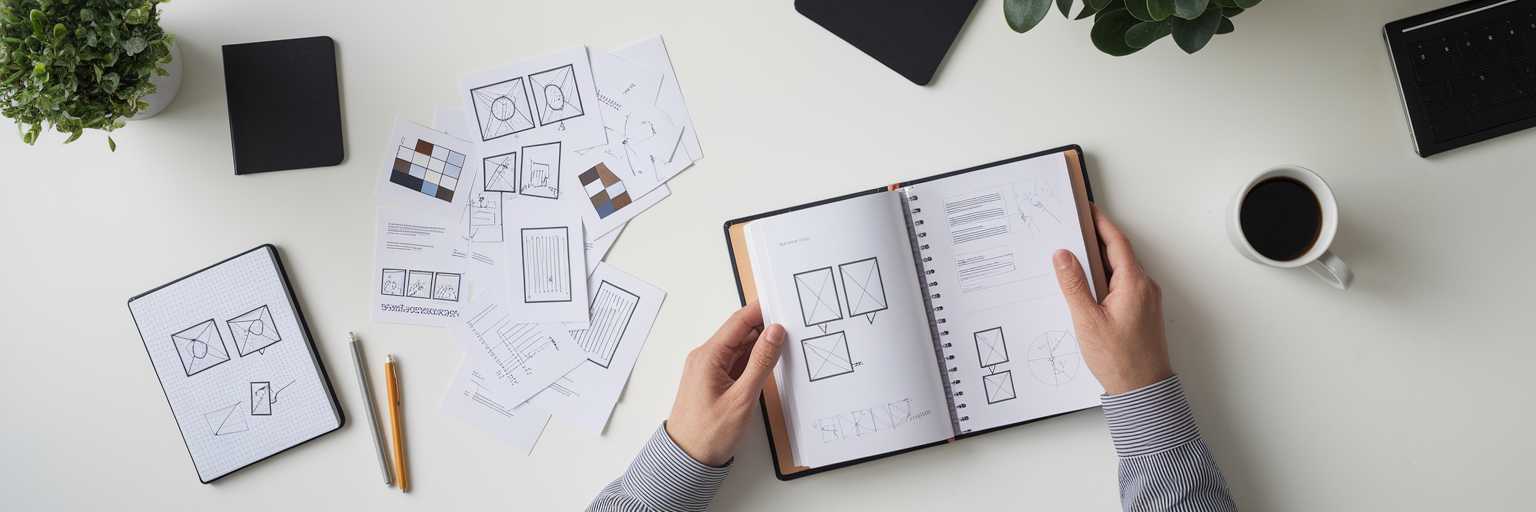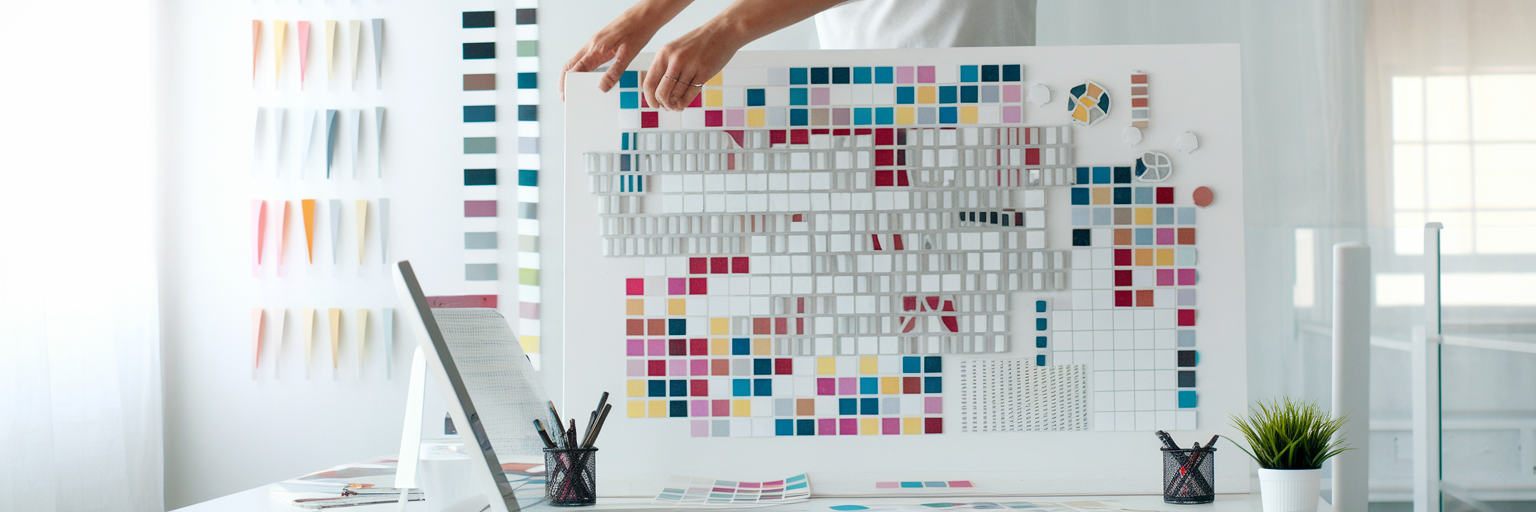From Creative Chaos to a Searchable Library
We’ve all been there. You have 42 open tabs, a desktop littered with screenshots, and that one perfect reference you swear you saved somewhere. When you're managing a large design project, this digital mess isn't just frustrating; it's a workflow killer. The inspiration you gathered is supposed to fuel your creativity, not bury it under layers of disorganization.
Traditional folders often make the problem worse. They force you to decide if that amazing dashboard design belongs in the "UI Inspiration" folder, the "Project Apollo" folder, or the "Fintech Designs" folder. Since an asset can only live in one place, you end up either duplicating files or losing them completely.
This is where a smart tagging system changes everything. Instead of thinking in rigid hierarchies, tagging allows you to create a multi-dimensional library where every reference can be found from multiple angles. It’s not just about labeling; it’s about building the architectural framework for a dynamic, searchable library. Let's explore how to organize creative references with a system that works for you, not against you.
Laying the Foundation for Your Tagging System
A powerful tagging system doesn't happen by accident. It’s built on a foundation of clear rules and foresight. Before you create a single tag, taking a moment to plan will save you countless hours down the road. This initial setup is the key to turning a random collection of links into a valuable, long-term asset.
Define Your End Goal First
Start by thinking about your future self. What will you need to find in six months when a new project kicks off? Will you be searching for a specific animation style, a pricing page layout, or all the work you did for a particular client? Answering these questions helps you understand how to tag inspiration effectively from day one.
Establish Your 'Tagging Manifesto'
Consistency is your best friend. A simple guide, or a "tagging manifesto," ensures everyone on your team speaks the same language. This document doesn't need to be complicated. It just needs to set a few ground rules:
- Singular vs. plural: Decide on one format, like
button instead of buttons.
- Casing: Stick to a single case, such as all lowercase (e.g.,
ecommerce).
- Character usage: Choose between hyphens and underscores for multi-word tags (e.g.,
landing-page).
This simple step prevents the kind of tag duplication that can clutter your system over time. For more ideas on building a productive workflow, you can explore the insights we've shared on our blog.
Categorize Tags for Clarity
Not all tags are created equal. Grouping them into categories makes your system intuitive and scalable. As WordPress VIP outlines in its content strategy best practices, categorizing tags is fundamental for effective organization. Consider starting with these three types:
- Subject Tags: Describe what the reference is (e.g.,
portfolio, dashboard, blog).
- Structural Tags: Describe the specific component or layout (e.g.,
landing-page, footer, navigation).
- Project Tags: Connect the reference to specific work (e.g.,
project-apollo, client-acme).
Three Core Tagging Models for Creative Workflows

With your foundation in place, you can now choose a model that fits your daily work. These tagging strategies for designers are not mutually exclusive. In fact, their real power is unlocked when you combine them. Think of these as different lenses through which you can view your inspiration library.
Model 1: The Project-Based System
Perfect for freelancers and agencies juggling multiple clients and deadlines. This model organizes everything around deliverables. It helps you quickly pull up all references related to a specific job, client, or project phase. You can instantly find every moodboard, wireframe, and final design associated with a project.
Model 2: The Component-Based System
This is the go-to for UI/UX designers and developers building a personal design system or component library. By tagging specific elements, patterns, and interactions, you create a powerful resource for future builds. Need inspiration for a data visualization or a unique button style? A quick filter brings up every example you've ever saved.
Model 3: The Thematic System
Ideal for broad inspiration gathering and early-stage moodboarding. This model uses more abstract tags related to style, mood, or industry. It’s less about specific project needs and more about capturing a feeling or aesthetic. When you're just starting to explore ideas, this system helps you discover unexpected connections. You can find fresh ideas daily in our curated inspiration feed.
The magic happens when you use a hybrid approach. A single bookmark can be tagged with [project:odyssey], [element:dashboard], and [style:minimalist], making it discoverable from three completely different angles. This flexibility ensures no good idea ever gets lost.
| Tagging Model |
Best For (Workflow Type) |
Example Tags |
| Project-Based |
Freelancers & agencies managing client work |
[client:acmecorp], [project:odyssey], [phase:moodboard] |
| Component-Based |
UI/UX designers & developers building a personal library |
[element:button], [pattern:data-viz], [typography:serif] |
| Thematic |
Ideation and early-stage moodboarding |
[style:brutalist], [mood:playful], [industry:fintech] |
Advanced Techniques to Keep Your System Scalable
As your inspiration library grows from hundreds to thousands of items, you'll need techniques to keep it from becoming unwieldy. Effective design project asset management is an ongoing process, not a one-time setup. These advanced methods ensure your system remains as useful on day 1,000 as it was on day one.
Use Nested Tags for Deeper Organization
For truly complex libraries, nested or hierarchical tags add another layer of precision. Think of them as folders within your tags. For example, instead of having separate tags for every form element, you could create a structure like ui > forms > input-fields. This keeps your primary tag list clean while allowing for deep, granular searches when you need them.
Implement 'Status' Tags to Manage Workflow
Your inspiration library can also function as a lightweight project management tool. By using "status" tags, you can track where each reference is in your workflow. Tags like [status:to-review], [status:approved], or [status:archived] turn a static collection into an active workspace, helping you and your team stay aligned.
Create a Shared Tag Dictionary for Your Team
To maintain consistency across a team, a shared tag dictionary is essential. This document, which can be a simple shared file, lists all approved tags and their intended use. It prevents team members from creating redundant or confusing tags, ensuring the library remains a reliable single source of truth. Proactive maintenance is crucial, as challenges like inconsistent tagging can undermine a system's value, a point highlighted by experts at Contentful.
Finally, schedule a regular tag audit. A quarterly review can prevent "tag bloat."
- Merge duplicate tags (e.g., combine
nav and navigation).
- Delete unused or irrelevant tags that no longer serve a purpose.
- Refine categories based on how your projects and needs have evolved.
Bringing Your Tagging Strategy to Life

Theory is great, but the real payoff comes when you put your system into practice with the right tool. This is where all your planning around creative workflow organization comes to life. A dedicated tool like Bookmarkify is built to turn your tagging strategy into an instant, searchable, and visual experience.
Imagine you need that minimalist dashboard for a fintech project you saw three months ago. Instead of digging through folders, you simply filter by [style:minimalist], [element:dashboard], and [industry:fintech]. In seconds, Bookmarkify surfaces the exact reference you were thinking of. This powerful filtering is the direct result of a well-planned tagging system.
Once you find that reference, you can go deeper. With a feature like our Design Analyse tool, you can instantly inspect its fonts, colors, and assets without ever leaving your library. Need to get feedback from a client? Share a tag-filtered collection with a unique URL, ensuring they only see the most relevant inspiration. This focused approach streamlines communication and keeps projects moving forward.
Best of all, this organized library doesn't have to be a boring list. With Bookmarkify’s Grid or Moodboard views, your collection becomes a beautiful and intuitive space that inspires you every time you open it.
Start Building Your Organized Workflow Today
Moving from creative chaos to a streamlined library is not about finding a magic bullet. It's about implementing a thoughtful tagging system that transforms your scattered inspiration into a valuable, searchable asset. This planned approach saves you time, sparks better ideas, and lets you stay in a state of creative flow without the anxiety of losing your next great idea.
Your inspiration deserves a better home than a messy desktop or an endless list of open tabs. It’s time to build a system that works as hard as you do.
Ready to tame the chaos and build your searchable inspiration library? Try Bookmarkify and put your new tagging strategy into practice today.












